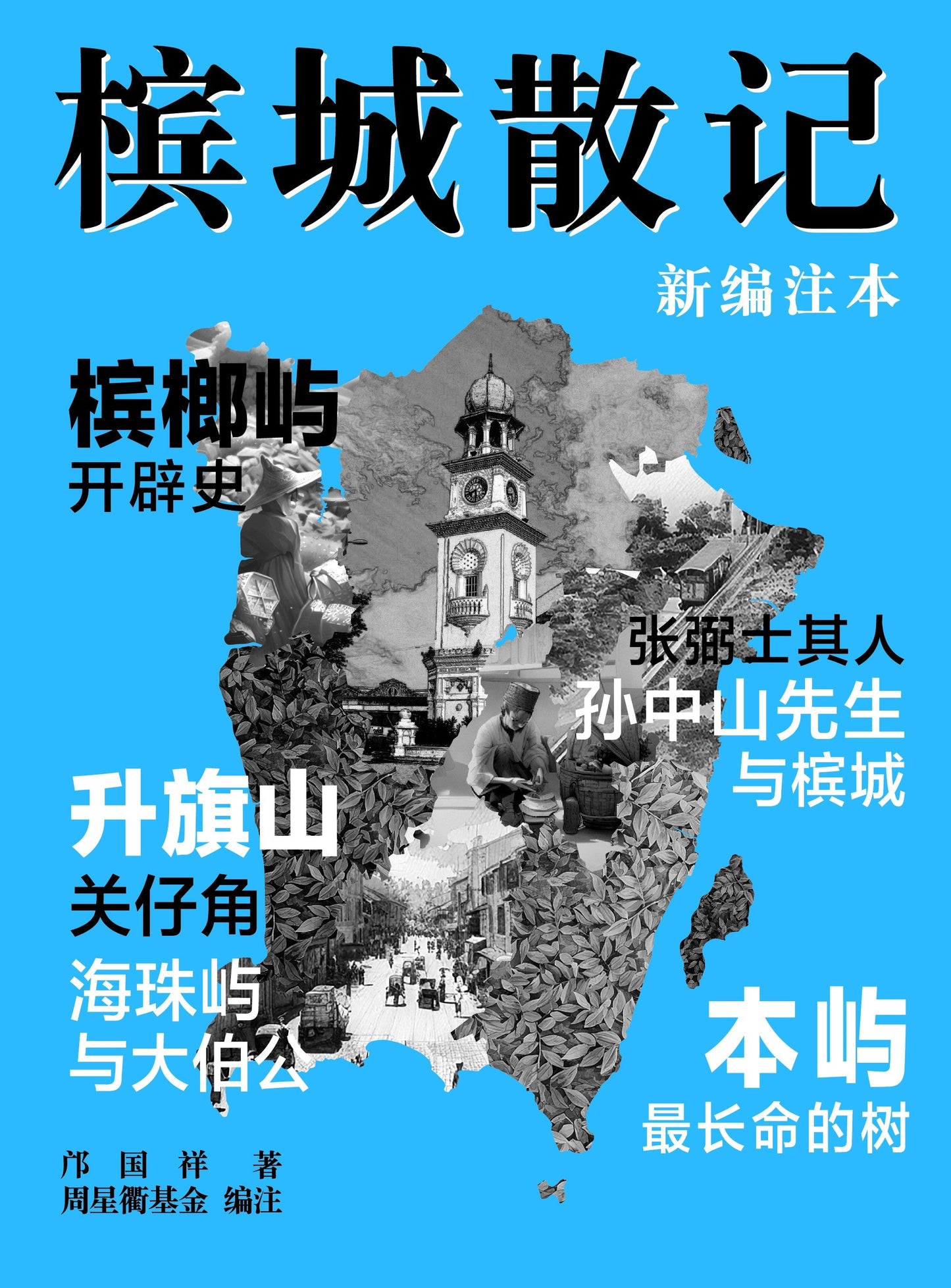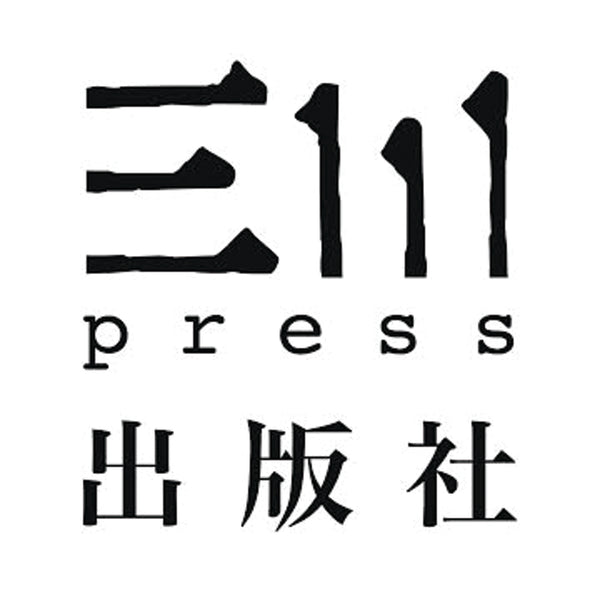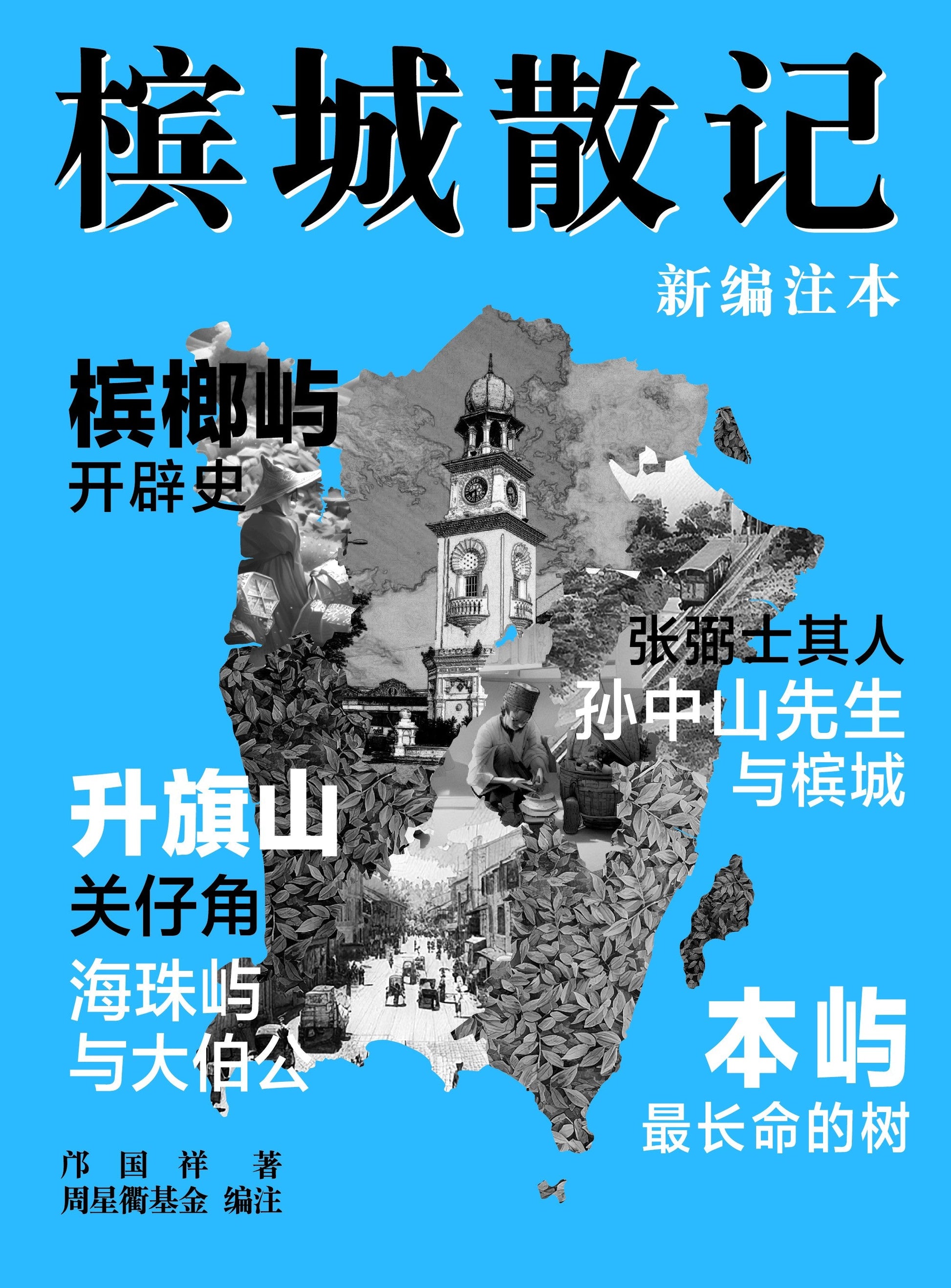Penang Notes (Newly Edited and Annotated Edition)
Penang Notes (Newly Edited and Annotated Edition)
1 in stock
Couldn't load pickup availability
ISBN/EAN: 9789811879050
出版日期: 2023-11-23
页数: 500页
语言: Simplified Chinese
The year 2023 marks the 65th anniversary of the publication of Penang Notes (1958) written by the late Penang expert Kwong Kok Siang (1904-1970) and published by World Books, as well as the 50th anniversary of the publication of Penang Notes: Sequel (1973). Classic works should be passed down through the ages, not just languishing in libraries. Following the critically acclaimed reprints of Lu Baiye's Malay Notes (Newly Annotated Edition) and Lion City Notes (Newly Annotated Edition), which were selected as books of the year by Singapore's Lianhe Zaobao and achieved the highest sales of Malaysian literature and history books in 2019, the Chou Sing Chu Foundation, the copyright holder of World Books' publications, is proud to present Penang Notes (Newly Annotated Edition). As the third volume in the "Sing Chu Classics" series, this extensive and rich collection of works is intended to be easily accessible to all Penang lovers, whether those yet to fall in love with the city, students, or even foreign tourists. With this volume in hand, they can savor every detail of Penang's past, and ultimately love and cherish Penang even more, so that it can live up to its UNESCO World Heritage designation. Penang is full of buildings with stories, and there is a strong cultural demand behind them. It is also one of the states with the highest proportion of Chinese population in Malaysia. Cultural and educational institutions and clan associations are everywhere. The complete supply of cultural and historical knowledge and sentiments can better shape the future development of Penang. As the saying goes, "hard power makes a city strong, and soft power makes a city great."
The geographical term "Penang" first appears in Zheng He's Navigation Map, originally included in the Ming Dynasty book "Wu Bei Zhi" (1628) compiled by Mao Yuanyi. There are also records indicating that Penang had navigable routes to China as early as the 15th century. Further back in time, human remains dating back 5,700 years were unearthed at the Guar Kepah shell midden site in northern Seberang Perai, Penang in 2017, dating back to the Neolithic Age.
Penang was modernized in 1786 under the leadership of British Captain Francis Light (1740-1794), over 200 years ago. With economic development and the influx of immigrants, schools, religious sites, newspapers, and clan associations flourished, disseminating knowledge and ideas, fostering the exchange of scholars and the flow of cultural influence. Penang's rich and diverse cultural history has made it a representative example of topographical research, attracting countless scholars over the years to explore the intricate relationships between the people and culture of Southeast Asia and Chinese and Western colonizers. Similarly, Beijing and Shanghai in China have established their own academic fields of "Beijing Studies" and "Shanghai Studies," while Japan's "Tokyo Studies" and "Kyoto Studies" have become models for sociologists. When a city's distinctive characteristics become self-contained, they can become a discipline, much like the "Redology" (study of "Dream of the Red Chamber") and "Zhang Studies" (study of Eileen Chang) in the literary world. The fruitful and growing body of research on Penang has contributed significantly to the well-established field of Penang Studies. Kuang Guoxiang's Penang Notes and Penang Notes: Sequel are undoubtedly two of the most important works in the construction of Penang Studies.
Originally from Yongxing, Dapu, Guangdong, China, Kuang Guoxiang was the great-nephew-in-law of Zhang Bishi, the first vice-consul in Penang during the Qing Dynasty. At the age of 26 (1930), he moved to Penang and took over the management of Shizhong School for decades. While in Penang, he delved deeply into literature and history. His book, "Penang Notes," was published by World Book Company in Singapore in 1958, and "Penang Notes: A Sequel" was published in 1973. Half a century later, the Chou Sing Chu Foundation has combined the two books into a single volume, "Penang Notes (Newly Annotated Edition)." In addition to the 67 original essays and four prefaces, the Foundation's editorial team has added hundreds of thousands of words of annotations and images to enhance the understanding of contemporary readers, along with a chronology of the authors and a consulting preface by Professors Wang Runhua and Du Zhongquan. The five volumes cover historical anecdotes, historical landscapes, local chronicles of scenic spots, temples and ancestral halls, and anecdotes about people, systematically presenting Penang as portrayed by the author.
The Federation of Malaya gained independence on August 31, 1957. The author wrote these essays in the 1940s and 1950s, a period of turmoil when diverse ethnic groups desperately needed to understand each other and unite to build a nation. Having lived in Penang for a long time, the author developed a deep affection for the land and a deep sense of pride in his heart. Drawing on his extensive local experience and knowledge, he diligently wrote over many years, drawing on extensive sources and expressing his passion and passion, resulting in "Penang Notes" and "Penang Notes: Sequel," two essential classics of Penang local history for enthusiasts of Southeast Asian literature and history.
As time passes, Penang society undergoes rapid transformation. The people and events depicted by the author have, with the passage of time, become stained by the passage of time, or vanish into thin air. Fortunately, the author's brilliant writing captures that period, allowing us to transcend time and space and experience the unique charm of Penang's "spirit."
Kwong Kwok-cheung
Originally from Yongxing, Dapu, Guangdong, China, he was the great-nephew-in-law of Zhang Bishi, the first vice-consul of the Qing Dynasty in Penang.
At the age of 26 (1930), he went to Penang and took over the middle school for decades. He also served as editor of the Star Penang Daily.
His book "Penang Notes" was published by World Book Company in Singapore in 1958, and "Penang Notes: Sequel" was published in 1973.
Preface to the New Editor's Notes (Cao Rong)
Consultant's Preface 1: A New and Diverse Interpretation of "Penang Notes" (Professor Wang Runhua)
Consultant's Preface 2: "Penang Expert" Kuang Guoxiang and His Writings on Literature and History (Professor Du Zhongquan)
Preface to "Penang Random Notes" by Chen Yijing; Preface to "Penang Random Notes" by Wen Zichuan; Preface to "Penang Random Notes: Sequel" by Wen Zichuan; Author's Preface to "Penang Random Notes: Sequel"; Chronology of Kuang Guoxiang (1904-1970) (Compiled by the Chou Sing Chu Foundation)
Volume 1: Historical Stories (6 articles)
Introduction (by Guo Shiling)
The History of Penang Island in the Spring and Autumn Period, The History of the Development of Penang Island, I Have Heard a Legend of Penang, The Battle of Huanghuagang and Penang, Penang Chinese in the Qing Dynasty, and the Malays of Penang Island
Volume 2: Historical Scenery (13 articles)
Introduction (by Guo Shiling)
A discussion of local Chinese customs, local prices a century ago, secret societies over a century ago, wedding dresses from the past, a discussion of a 170-year-old pharmacy, a slaughterhouse on the island, anti-malarial equipment on the island, three elegant school names, St. Nicholas' Home for the Blind and School for the Deaf, and the island's longest-lived tree, the pine tree, and the breadfruit tree.
Volume 3: Local Records of Famous Places (14 articles)
Introduction (Shen Yuanan)
Penang Hill, Gurney Drive, the Big Clock Tower, Chanmegang, Fragrant Flower Cape, Sungai Pinang, Ayer Itam Reservoir, and the "Red Hair Garden" seen by passersby.
A glimpse of the new gardens, the Lotus River in Tanjong Bungah, and the Air Itam Dam. A tour of Penang Island through the eyes of tourists.
Volume 4: Temples and Ancestral Halls (15 articles)
Introduction (by Qiu Lilian)
Kek Lok Si, 1,200-story Guangfu Temple, Qinglong Temple, Haizhu Island and Tua Pek Kong Island, City God Temple, Earth Mother Temple, Yushan Temple in Tanjung Bungah, Worshiping the God of Heaven and the Tiangong Altar, Xiayang Zhide Hall, Qiu Clan Longshan Hall, Jiulong Hall, Mei Clan Ancestral Hall, Shek Tong Xie Clan Ancestral Hall, Xie Shitang Family Tomb Observations
Volume 5: Anecdotes of People (19 articles)
Introduction (by Cao Rong)
Colonel Wright on Cao Yazhi, the earliest famous overseas Chinese, the Qing Dynasty consul in Penang, Zhang Bishi, Zhang Bishi and local culture and education, Zheng Jinggui
The anecdotes of "Tin King" Hu Zichun and Xie Zengyu; The life of Mr. Zhong Lechen; Qing government correspondence; The opinions of Mr. Sun Kang and Mr. Chen Xinzheng; Mr. Wu Shirong and Mr. Huang Jinqing; Mr. Sun Yat-sen and Penang; Two eminent monks in Penang; Monk Fakong and the World Zoo; Anecdotes of overseas Chinese in Penang; Mr. Cao Shunyuan, a venerable Penang resident.
Appendix: Map of Penang; Place Names from "Penang Notes" (illustrated by Chou Sing Chu Foundation)
Acknowledgements
Share


